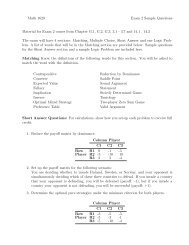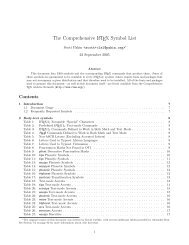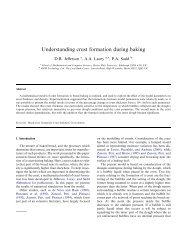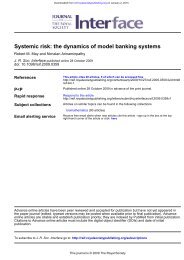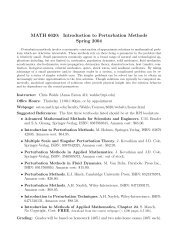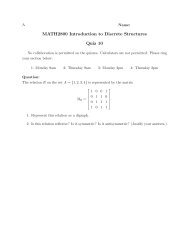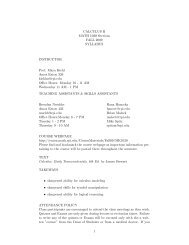On converging shock waves of spherical and polyhedral form
On converging shock waves of spherical and polyhedral form
On converging shock waves of spherical and polyhedral form
Create successful ePaper yourself
Turn your PDF publications into a flip-book with our unique Google optimized e-Paper software.
380 D. W. Schwendeman<br />
(a) Time = 0.2921 Average radius = 0.2378 (b) Time = 0.3021 Average radius = 0.2020<br />
7<br />
7<br />
6<br />
6<br />
Shock Mach number<br />
5<br />
4<br />
Shock Mach number<br />
5<br />
4<br />
3<br />
3<br />
(c) Time = 0.3069 Average radius = 0.1842 (d) Time = 0.3110 Average radius = 0.1679<br />
7<br />
7<br />
6<br />
6<br />
Shock Mach number<br />
5<br />
4<br />
Shock Mach number<br />
5<br />
4<br />
3<br />
3<br />
(e) Time = 0.3147 Average radius = 0.1527 ( f ) Time = 0.3183 Average radius = 0.1376<br />
7<br />
7<br />
6<br />
6<br />
Shock Mach number<br />
5<br />
4<br />
Shock Mach number<br />
5<br />
4<br />
3<br />
3<br />
Figure 9 (a–f ). For caption see facing page.<br />
with the behaviour <strong>of</strong> the local extrema in Mach number along the ray from V . If we<br />
label the Mach number <strong>and</strong> radius at local maxima, say, as M p <strong>and</strong> r p , respectively,<br />
then it is evident from the plots that<br />
M p ∝ r −2/n<br />
p<br />
so that the increase in Mach number for each step <strong>of</strong> the repeating sequence follows



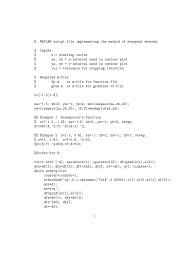

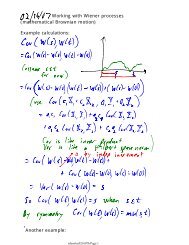

![MATH 1500 Sample Questions Exam 2 1. [3.7] A 10-ft plank is ...](https://img.yumpu.com/43861920/1/190x245/math-1500-sample-questions-exam-2-1-37-a-10-ft-plank-is-.jpg?quality=85)
